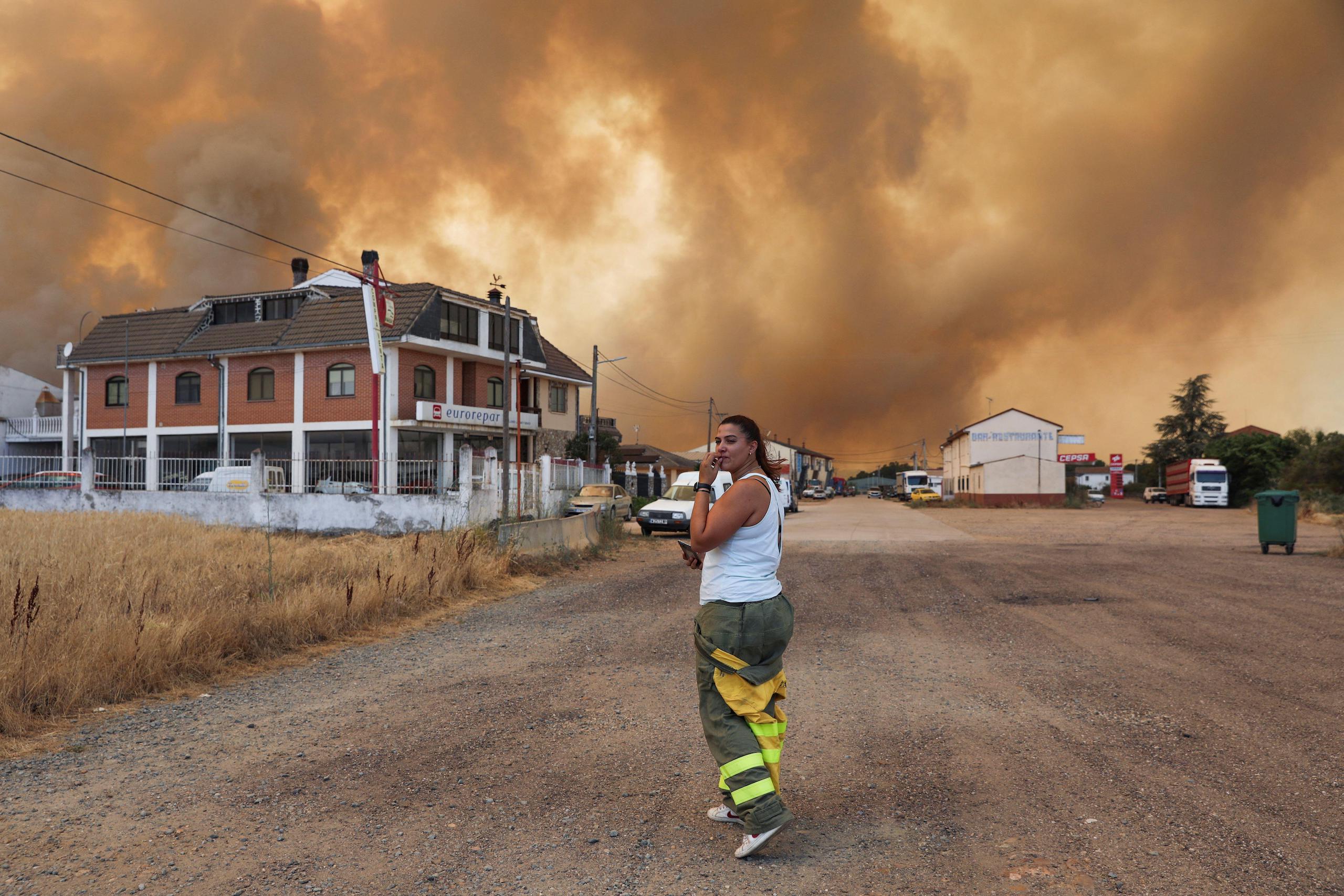If you can’t measure it, you can’t manage it, so the saying goes. Understanding the effect of today’s emissions on tomorrow’s people is hugely complex and the methods used so far have had to be approximate.
Now, a team of scientists led by Resources for the Future (RFF), a Washington DC-based nonprofit, has completed a multi-year study that has updated a key metric, known as the social cost of carbon (SCC). The results, published in Nature magazine, provide a much clearer, evidence-based picture, which is likely to change government policy in the US and beyond.
What is the social cost of carbon?
SCC is a dollar estimate of the long-term damage caused by emitting a tonne of carbon dioxide in a given year. It’s designed to weigh the benefits of reducing warming against the costs of cutting emissions. Michael Greenstone, a University of Chicago economist, first calculated it in 2010. He has since described it as “the most important number you’ve never heard of. It captures the changes in mortality rates that are going to happen… the changes in crop yields… the changes in sea level rise, and the damages that will cost…”
Effectively, SCC indicates what price society should be willing to pay now to avoid the future damage of today’s carbon emissions. The metric puts a figure on the damage caused by emissions in a way that all can understand, and enables a debate both on the extent of the problem and the possible solutions.
US federal agencies use SCC as part of their cost-benefit analysis to help with making decisions in several public policy areas, such as transport and energy. When proposing a new regulation or investment project, they often have to present a regulatory impact analysis showing that its environmental benefits outweigh the financial costs. Agencies may need to show, for example, that the increased regulatory burden of energy-efficiency rules is a price worth paying for the resulting reduction in pollution.
A higher figure means the benefits of cutting CO2 are large, and so can be used to justify even quite costly or disruptive climate policy actions
The cost, currently set by the US government at US$51 per metric tonne, plays a pivotal role in determining policy. If the SCC is low, new laws might not be worth the effort. But a higher figure will mean the benefits of cutting CO2 are large, and so can be used to justify even quite costly or disruptive climate policy actions. In other words, the SCC has to be higher than the abatement costs to justify the policy.
There is a large school of thought holding the SCC to be too low. This is because “the current price does not yet include all of the widely recognised and accepted scientific and economic impacts of climate change,” according to the US-based Environmental Defense Fund.
How is the social cost of carbon calculated?
The “integrated assessment models” that scientists use to calculate SCC comprise four related elements, as explained by Carbon Brief:
1. Socio-economic projections: For example, how many people will be alive in 2150? How much CO2 will they emit?
2. The “climate module”: How will the climate be altered by those emissions? How fast will sea levels and temperatures rise? What about rainfall and extreme weather?
3. Costs and benefits: What will happen to crop yields? What is the cost of living with, versus adapting to, sea level rise? In a hotter world, what will happen to labour productivity? What about the cost of energy for heating and cooling? How should “non-market” impacts such as species loss be valued?
4. The discount rate: This tries to value future costs and benefits in today’s money. Widely different results may be given according to the rate selected.
The fourth element is the most contentious. While avoiding emissions may cost money now, the impacts of not doing so will be felt over hundreds of years. As Carbon Brief notes: “The choice of discount rate strongly affects the social cost of carbon. The current US SCC ranges from $10 at a 5% discount rate to $50 at 2.5%. The conservative think tank the Heritage Foundation calls for a 7% rate, which it says would reduce the SCC by 80%.”
Another factor is that climate impacts are non-linear. Each additional degree of temperature will be more costly than the last; the impact of moving from 1.5C to 2C is greater than from 0.5C to 1C.
The complexity of the calculation, the range of assumptions that need to be made and the modelling used mean the SCC is open to many interpretations, and political gridlock.
Establishing the true cost of carbon emissions
It is in this context that the RFF paper makes progress, by presenting an academically rigorous update on the key elements used to calculate SCC.
Its headline conclusion is that the US government’s current SCC value of $51 should actually be 3.6 times higher, at $185 per tonne of CO2.
Kevin Rennert, a fellow at the RFF, who co-led the study, explains to China Dialogue why the cost is so much higher:
Our work provides a comprehensive scientific update to all of the pieces of SCC estimation – brought together in a new, open-source model. The updates include reliance on a set of new probabilistic projections of population, economic growth and emissions, a modern climate model, state-of-the-science representations of damages from four sectors (temperature-related mortality, agriculture, energy expenditures and coastal impacts), and a discounting approach that prices risk. In short, it’s a completely updated model compared to what the US federal government has been using to date.
The greatest contributor to the difference between our central estimate and that of the US government is our change to a 2% discount rate to reflect economic data from the last 30 years. (The US government is still using the 3% discount rate it calculated in 2003 based on older data on real market interest rates, which used to be much higher). The other scientific updates contribute significantly as well. Even using the same 3% discount rate as the federal government, we find that our updated SCC is $80 per ton of carbon dioxide, a roughly 57% increase over the US government’s current estimate of $51.
Rennert says that, based on the latest science and economic conditions, policies to reduce greenhouse gas emissions provide significantly greater benefits than have been accounted for previously. In other words, the higher SCC values, compared to estimates currently used in policy evaluation, substantially increase the estimated benefits of greenhouse gas mitigation and thereby increase the expected net benefits of more stringent climate policies.
Expect more wrangling over the SCC
The implications for the US federal government’s climate change policies are potentially wide-ranging. It is too early to know how it will translate into policy action in the US but, in practice, the findings provide academic support for more stringent regulatory actions on, for example, emissions standards for vehicles and power plants, procurement decisions and environmental impact analyses.
$200 per tonne
The US Environment Protection Agency’s recommended social cost of carbon
The SCC has for more than a decade been a battleground between those who want to accelerate efforts to fight climate change and those more concerned about protecting their industries from additional cost burdens and regulations imposed by the federal government. The revised SCC promises to liven up the debate even more. The US Environmental Protection Agency has already announced its recommendation that the SCC should be raised to almost $200 per tonne. Those US states that have opposed the current SCC price so far (the lawsuits are ongoing) will surely oppose the new one too, once it is agreed.
For Rennert, the incentive for the government to adopt the revised SCC is clear: “The increased social cost of carbon would mean that more stringent climate policies across many different sectors of the economy would be estimated to be net beneficial, and therefore support greater ambition to reduce emissions.”
To gain acceptance for their paper, the authors have gone to great lengths to be transparent about their methodology. Rennert says: “The paper has been received very positively for its rigorously updated scientific methodology, thorough accounting of uncertainty and its transparency. We have conducted our research in a manner that is highly relevant for the US government process currently underway to update the official estimates.”
Maximilian Auffhammer, professor of International Sustainable Development at the University of California Berkeley, has reviewed it and is impressed. He describes the paper as “a major step forward” in the debate, for several reasons. Firstly, as he says, “it lives in the light. I mean it’s all open source,” which means that the authors’ calculations have been made freely available to download for anyone wanting to run their own analysis.
It also features “a significant update” to discounting, taking into account the rate of economic growth and using a 2% risk-free rate, lower than the lowest used before. But he was most impressed with their approach to the characterisation of uncertainty:
“The authors update the climate model to reflect current scientific understanding, a damage component and a discounting module. Each of these has its own source of uncertainty – some related to assumptions about the future, some related to assumptions about parameters. But this new model (GIVE) allows us to take into account the change in uncertainty and translates this into a distribution of the SCC, taking these different sources of uncertainty into account.”
The paper looks well set to be a key piece of research to be referenced by all sides of the debate in the US and in those countries that also use this metric. Although the timing of the report is unfortunate, now that energy security heads the global agenda, at least we have a more accurate measure of the problem and a better idea of how to manage it.








